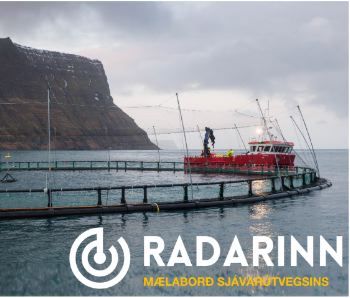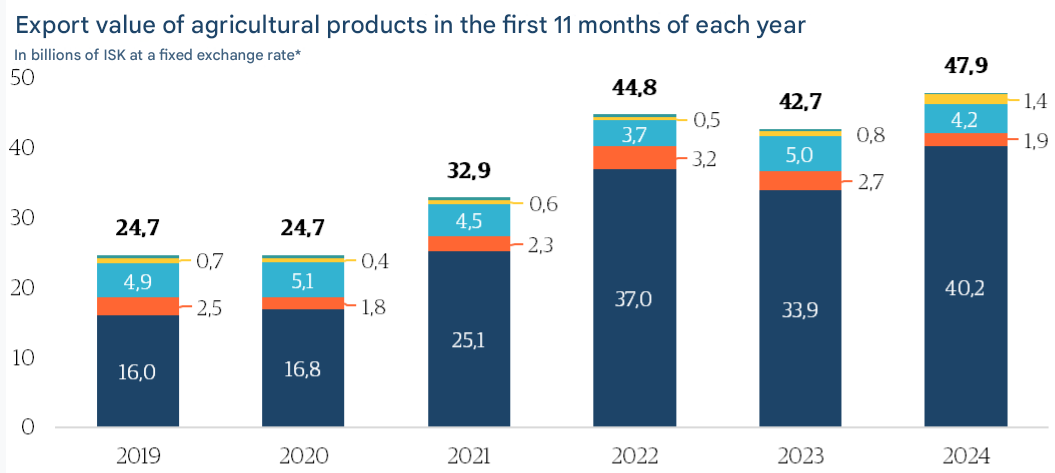|

Photo: radarinn
Icelandic Aquaculture Achieves Near-Record Export Performance in January
 ICELAND
ICELAND
Monday, February 17, 2025, 11:00 (GMT + 9)
Strong Growth Signals Continued Sector Expansion
Iceland's aquaculture sector continues its robust growth trajectory, generating over 8 billion Icelandic Krona (ISK) in export revenue during January. This represents the second-highest monthly export value for aquaculture products on record. Compared to January of the previous year, this reflects a 22% increase in ISK terms and a 24% increase at constant exchange rates, as reported in preliminary trade statistics released by Statistics Iceland last week. Detailed species-specific data will be available at the end of the month.
.png)
Click on the image to enlarge it
Aquaculture's Growing Contribution to Exports
The overall value of merchandise exports also experienced significant year-on-year growth in January, increasing by approximately 21% at constant exchange rates. Consequently, aquaculture's share of total merchandise export value rose from 8.3% to 8.6% between January of the previous year and January of the current year, indicating that aquaculture growth is outpacing other export sectors. Notably, the export value of marine fisheries products remained relatively stable year-on-year in January. Therefore, aquaculture's share of marine fisheries export value reached nearly 28%, an all-time monthly high. The following visual depicts aquaculture export value in January and its relative contribution to marine fisheries exports and total merchandise exports.
.png)
Click on the image to enlarge it
Species-Specific Performance and Market Trends
Detailed species-specific data for January and December will be released later in the month. However, insights from November's detailed statistics reveal significant trends:
- Atlantic Salmon (Salmo salar): Export value reached over 40 billion ISK in the first eleven months of 2024, a 19% increase compared to the same period in 2023. Atlantic salmon now holds the second-highest export value among all Icelandic fish species, trailing only Atlantic cod (Gadus morhua), and surpassing haddock (Melanogrammus aeglefinus) by a significant margin. The production forecast indicates this gap will widen in the coming years.
- Trout (Salmo trutta) and Arctic Char (Salvelinus alpinus): Conversely, trout and Arctic char exports experienced a 17% decline in the first eleven months of 2024, with export value totaling approximately 4.2 billion ISK compared to over 5 billion ISK in 2023.
- Fertilized Eggs: Export value of fertilized eggs, a high-tech aquaculture product, declined by 29% year-on-year, reaching nearly 1.9 billion ISK in the first eleven months of 2024.
- Senegal Sole (Solea senegalensis): Notably, Senegal sole exports achieved a record high, with export value reaching 1.4 billion ISK in the first eleven months of 2024, an 81% increase compared to the previous year.


Diversification and Economic Resilience
The data clearly demonstrates aquaculture's growing importance to Iceland's export economy. The sector's diversification strengthens the nation's economic resilience, reducing reliance on traditional fisheries. This trend is expected to continue, with aquaculture playing an increasingly vital role in Iceland's economic landscape.
Source: Radarinn
editorial@seafood.media
www.seafood.media
|
|



